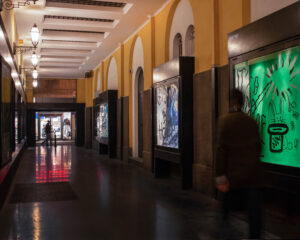Let’s Not Be Honest







Among the recurring elements of our online experience in the first decade of the 2000s were pale brown walls, the backdrops of the first American Youtubers. After a decade Youtubers have become influencers and their rooms are the result of careful set design inspired by Instagram imperative “curate your post more than your life”.
In the XIX century, breathing the optimism of positivism, the fathers of photography wished that one day their creation may conquer the world and turn it into a picture, in order to make it more intelligible. Today, when everything might be a photo opportunity and everything is Instagrammable, we could say that their wishes have partially become reality.
Our impetus to produce new content is force a that crushes everything. We aspire to ascend in the world of influencers, we are reminded that we can make it because society is fluid like never before. Yet, in another unprecedented context, during the lockdown we had to open the doors of our houses to plenty of strangers, live streaming the intimacy of our domestic spaces. In a sudden lack of cool locations where to fake our social status, we had to find smart solutions to keep our social image intact and avoid great humiliation in front of our bosses, colleagues, followers or simply our friends. In those months, one Amazon article lived a brief-but-not-surprising success: photographic backgrounds: contrary to those people opting for an empty white wall, people enjoyed the possibility of faking it to the point of appearing online in front of an antique library, or in the living room of a countryside cottage. Sometimes, virtual backgrounds are not enough.
Photography has never been a truth machine. It always told us lies, although convincing. So, let’s have some fun. Let’s make everything we can to turn ourselves into images, as we are invited to do. But don’t forget that we never had to be honest.